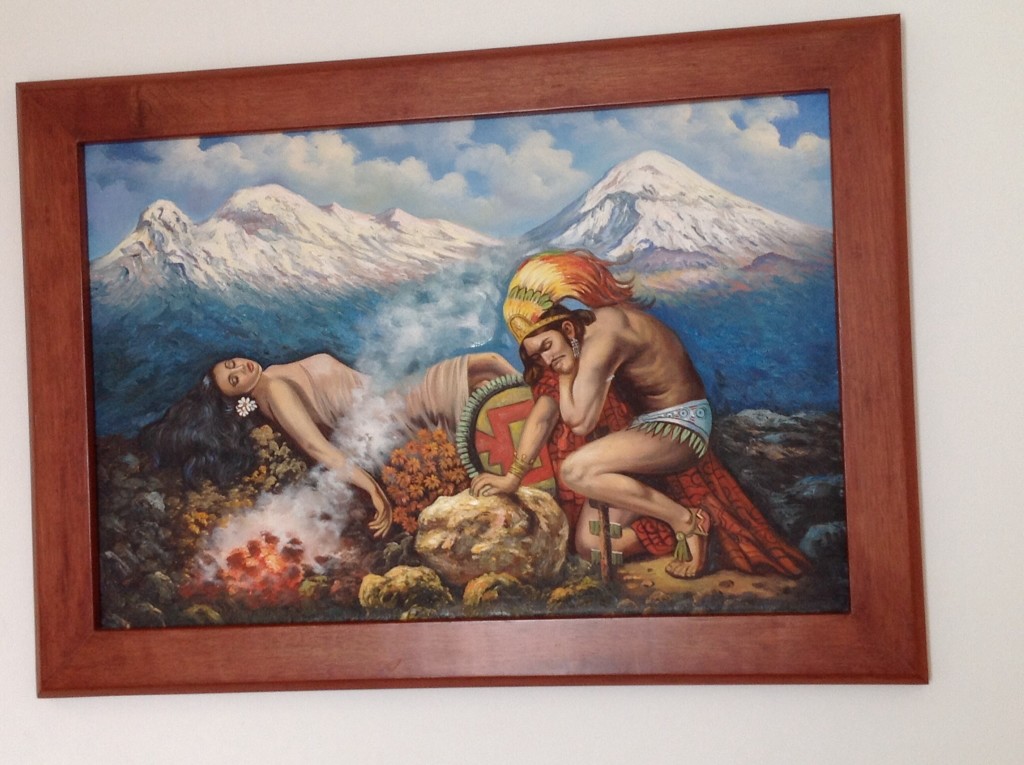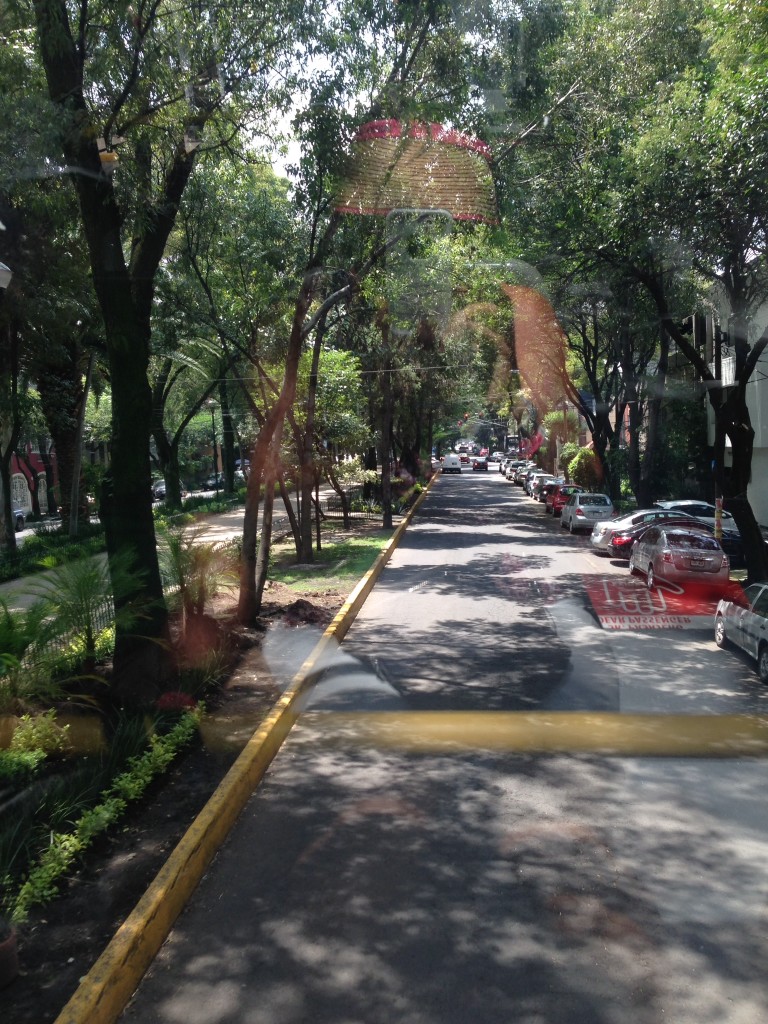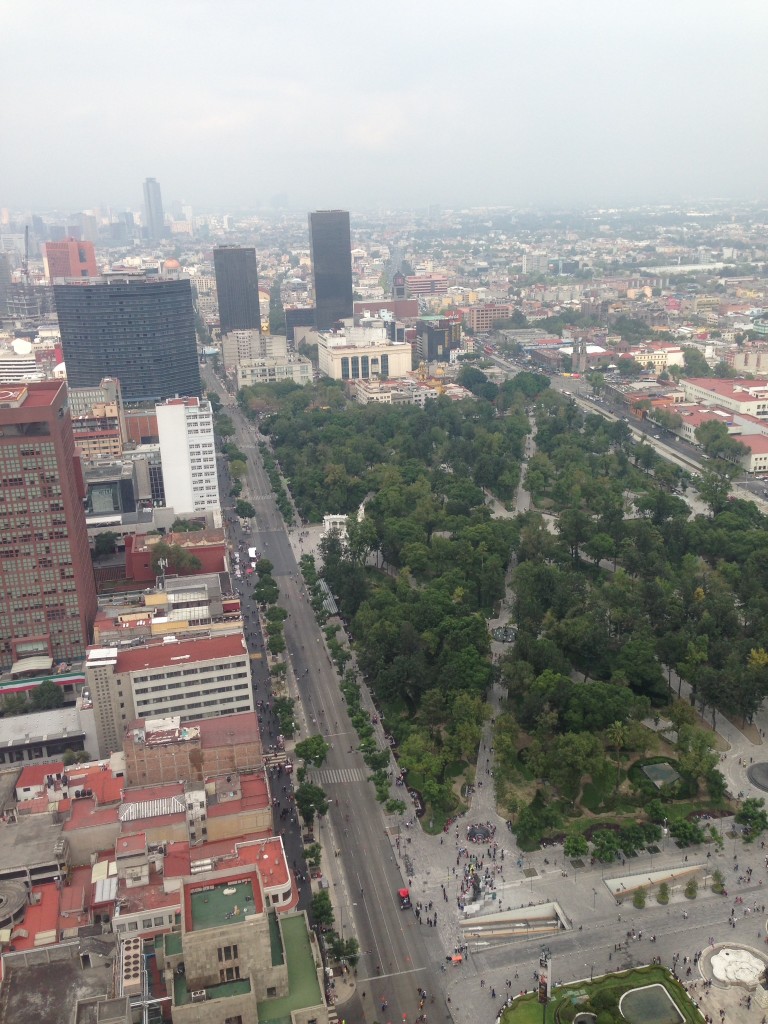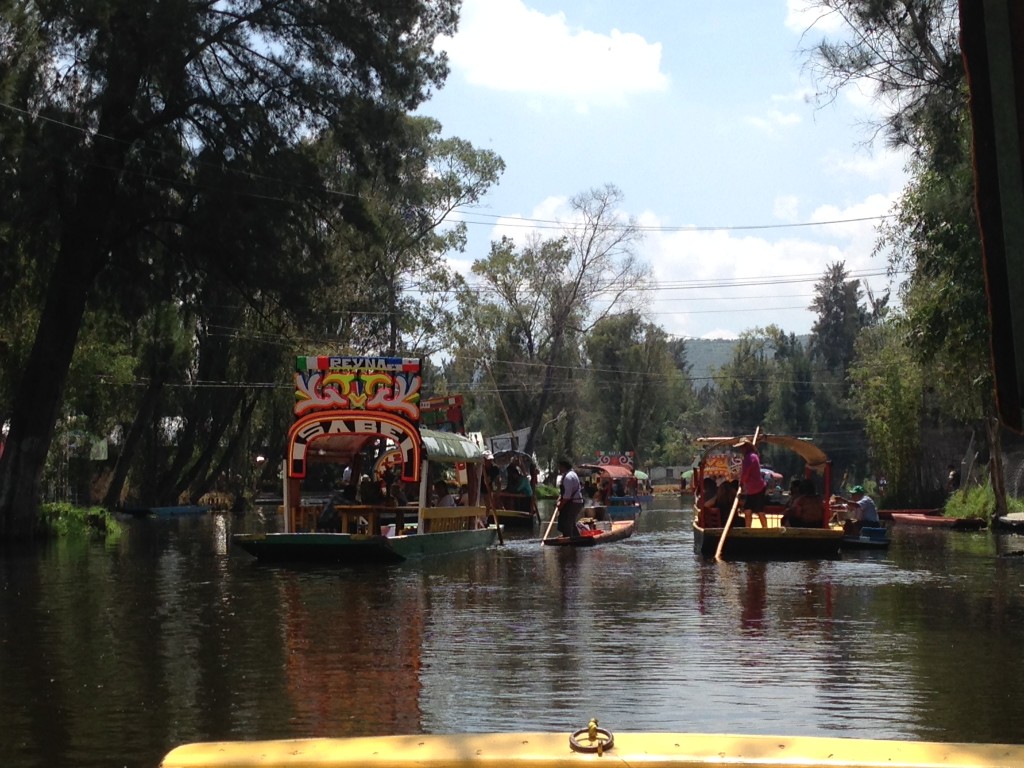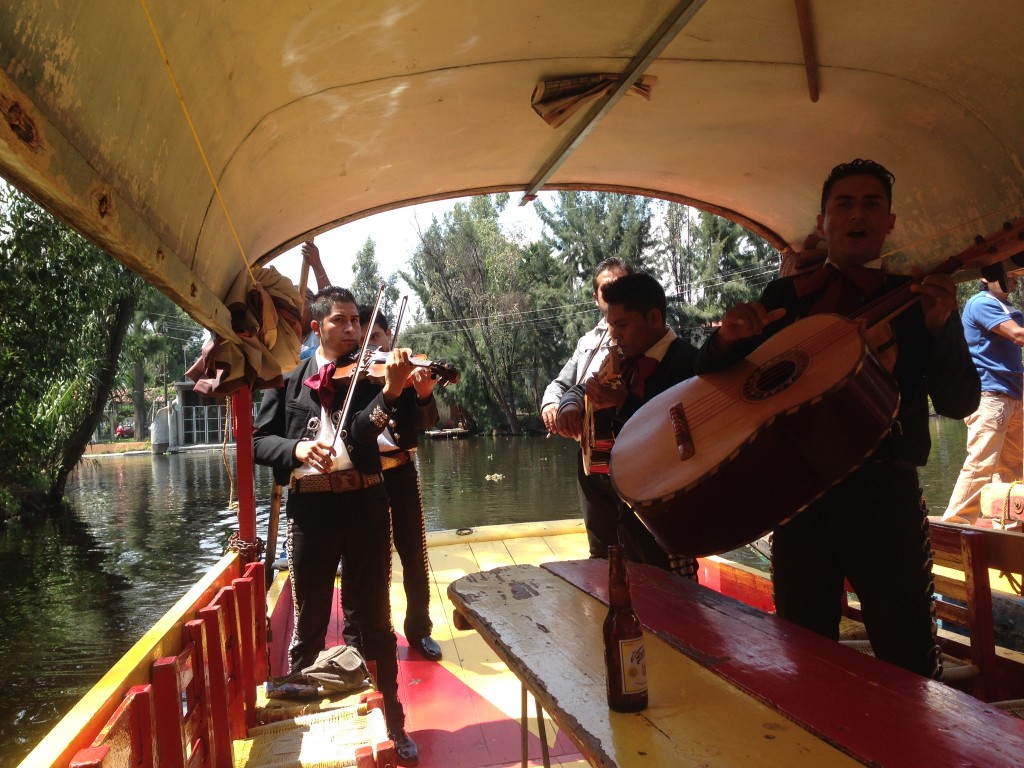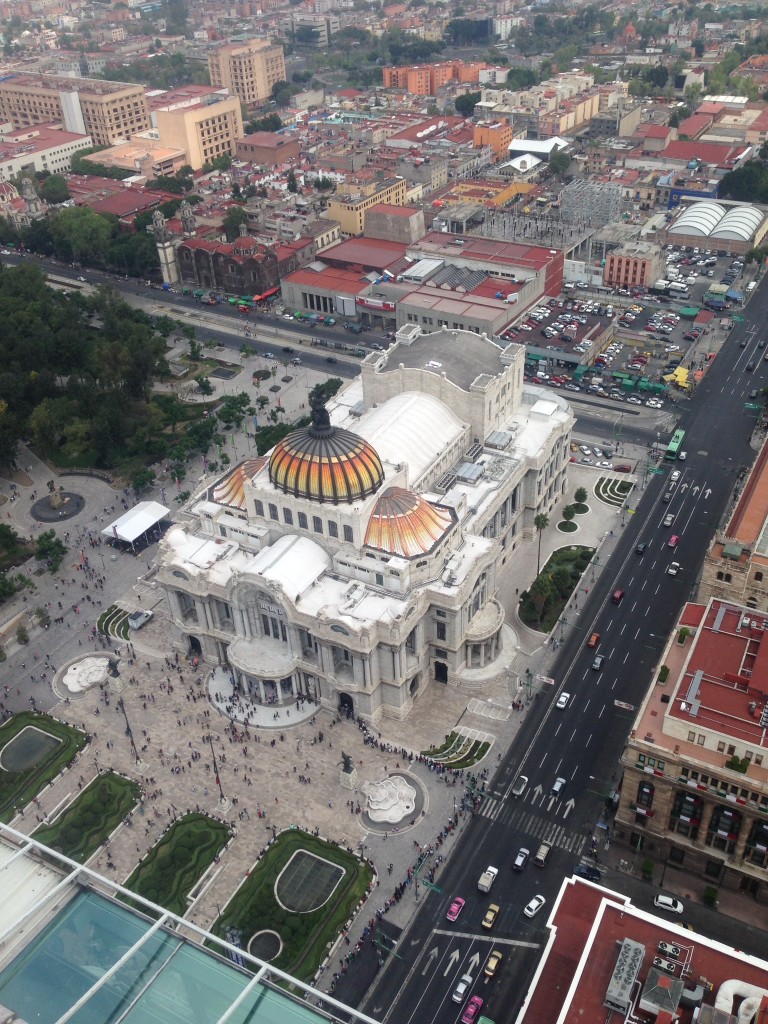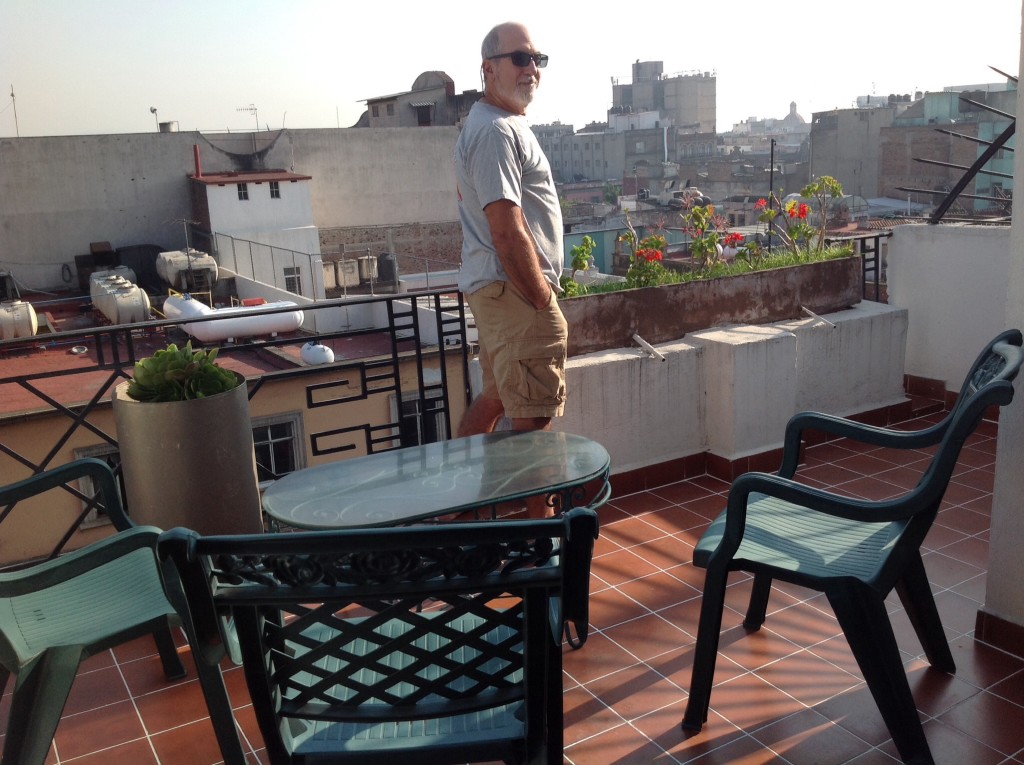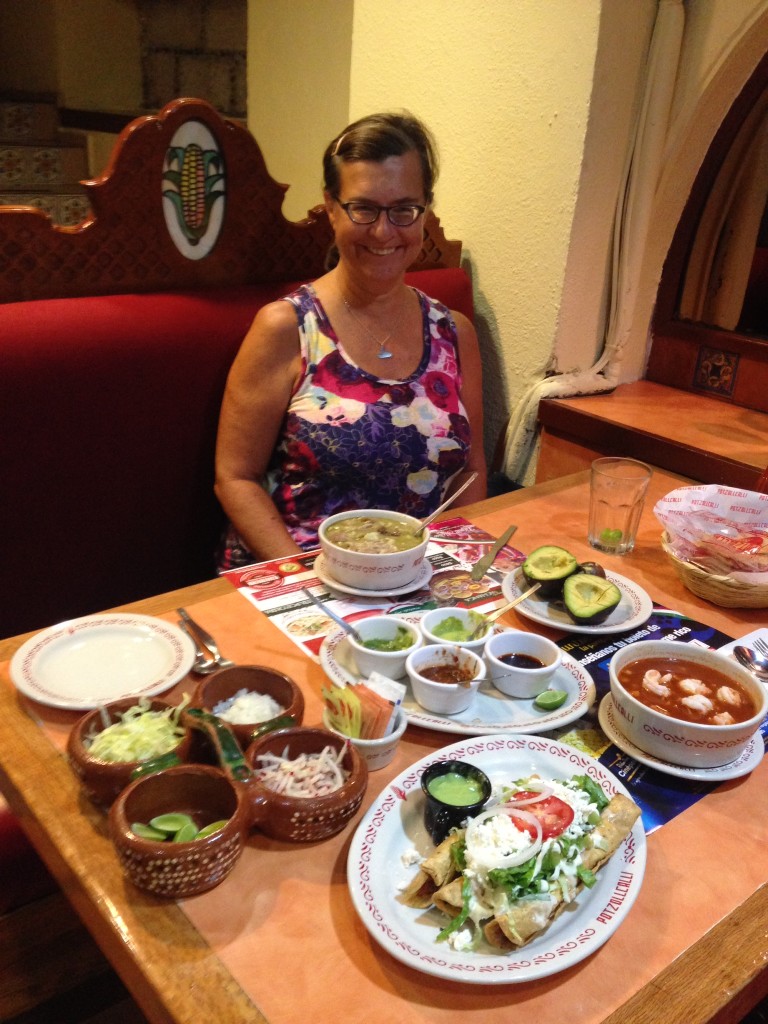Mexico City is 20 million people living at 7300 feet elevation in a huge valley surrounded by mountains in the shape of a princess and her warrior lover. The location was chosen by the Aztecs based on a vision foretold by their gods that their new home would be identified by an eagle on a prickly pear cactus with a snake in its beak and talons. The highly centralized Aztec culture influenced Mexican life even more than the Spanish culture did, and the signs are everywhere, in the language, in the food, in the religion, in the skin and hair color, everywhere. This eagle is the symbol on the Mexican flag, which waved in front of us with fireworks in the background, on the celebration of Mexican Independence Day in this heartbeat of Mexico.
Here is a link to a video we took of the fireworks for Independence Day:
Independence Day Grita! In Mexico City, from our terrace
Because it is built on a now-dried up lakebed in earthquake country, most buildings in Mexico City are six stories or less, so the city from above shows an endless view of short buildings made from stone or cement blocks, with thoroughfares crisscrossing the city and surrounding it, and with large patches of green dotting the landscape where parks have been built. But when you get down to street level, the differences between areas are dramatic. There is the Paseo de la Reforma, a French-style wide boulevard with high maintenance median landscaping, huge hotels and magnificent statues of historical significance in the center of major intersections. There is Chapultepec Park, at least the size of Golden Gate Park in San Francisco and at least as glamorous as Central Park in New York City. There is Polanco, the high-end shopping district and traditionally Jewish neighborhood. Much further south, there is the Coyoacán neighborhood of wood-lined narrow boulevards, colonial homes, adorable eateries and Frida Kahlo’s house. Everywhere you go is different; it reminded me of the differences in neighborhoods you find in San Francisco (from working class neighborhoods to chic to established wealth and everything in between), except on a much larger scale.
We spent nearly two weeks in Mexico City, almost half of our entire trip. But there is so much to see and do, we only covered the most well known sites. We took a bus tour of the most established neighborhoods; we visited the floating gardens of Xochimilco; we went to the Palacio de Bellas Artes to see the most magnificent indigenous dancing performance in all of Mexico; we toured Frida Kahlo’s house; we took a bus out of town for the day to see Teotihuacan, the ruins of the Aztec predecessors; we toured the Templo Major right near the downtown square, where the Aztecs saw the Eagle; we visited the museum that houses Carlos Slim’s private collection of art, an uber-modern building with six floors of sculptures and paintings in all mediums covering several centuries; we saw the Diego Rivera mural inside the Palacio de Gobierno on the main square where the President of Mexico conducts business; we spent a day at the grand Museum of Anthropology; the list goes on and on. We got around almost entirely on the Mexico City Metro – a jam-packed subway system that goes everywhere for 5 pesos – less than 30 cents – including free transfers. Just don’t get on with anything valuable that you don’t absolutely need, and keep your money close to your chest. We didn’t witness any violence at all, but pickpockets can be quite peaceful indeed.

Rick climbed to the top of the Temple of the Moon in Teotihuacan, with the Temple of the Sun in the background
While there were plenty of cheap hotel rooms, we decided to bump up our budget a little and stayed in nicely maintained hotel with a large room and an enormous terrace on the top floor only a block from the center of the historic district. (It was only $60/night so it still didn’t break the budget). It was so lovely there. The desk staff greeted us by name every morning, and it was small enough to feel like we were at home. We even got to know some of the other people staying at the hotel.
We found ourselves settling in quite well. By the end, we knew our way around the historic district/downtown neighborhood without a map, and referenced the Metro map more discretely. Rick found an off-line map program called maps.me that worked like a dream on our iPhones so we could know exactly where we were if we wanted to, without Internet. We ate at several inexpensive local restaurants for breakfast and dinner, and sometimes just ate at street-stands, which are everywhere.
Mexico City is not for everyone; it is a busy city with lots of people and smog, and not much greenery unless you seek it out. I wouldn’t want to drive there (again – I did drive my motorcycle there 30 years ago but I didn’t like driving then either. The good news is that you don’t have to drive because public transportation is abundant and cheap). But if you want to absorb the essential flavor of the Mexican culture, there is no where like it. We loved it.

